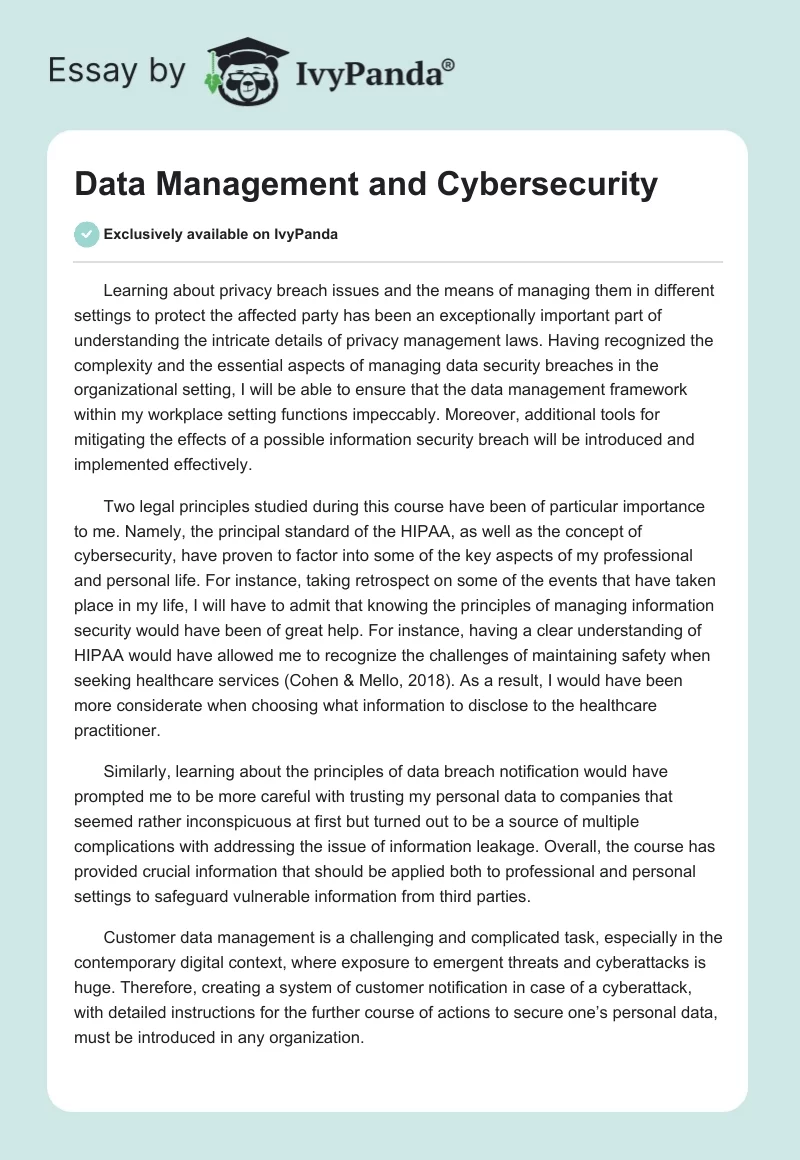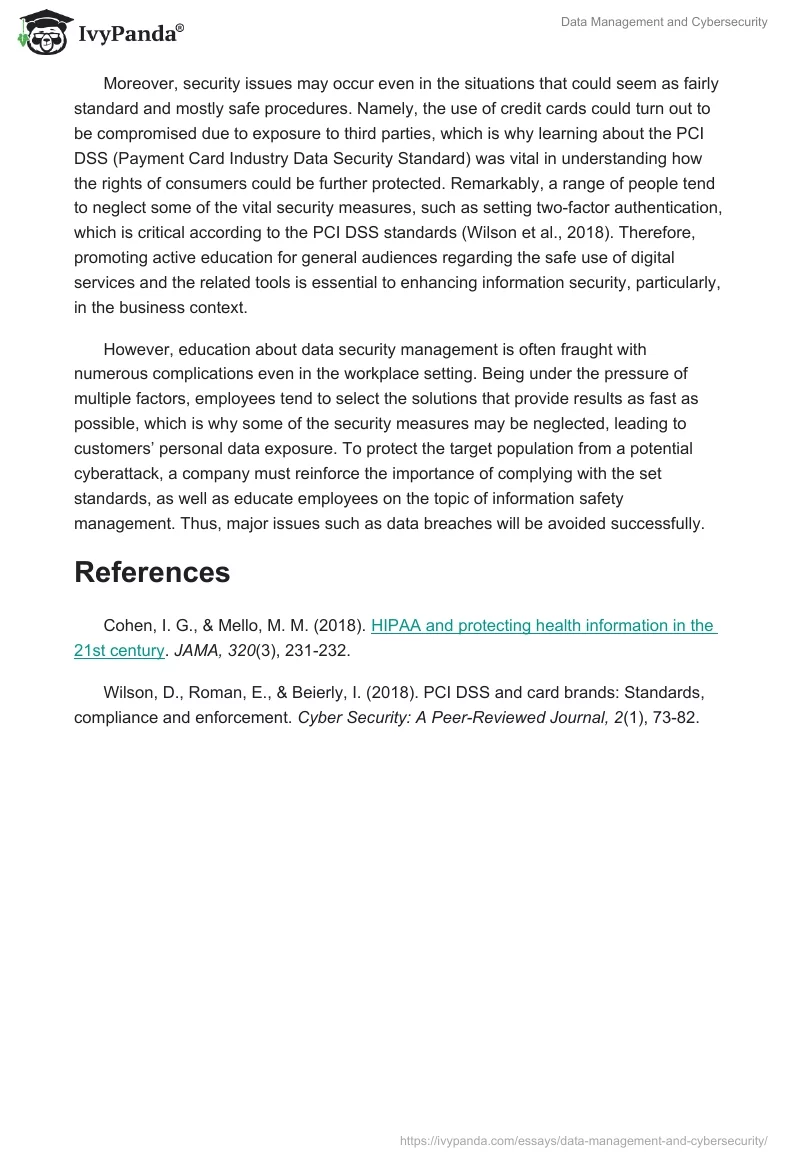Learning about privacy breach issues and the means of managing them in different settings to protect the affected party has been an exceptionally important part of understanding the intricate details of privacy management laws. Having recognized the complexity and the essential aspects of managing data security breaches in the organizational setting, I will be able to ensure that the data management framework within my workplace setting functions impeccably. Moreover, additional tools for mitigating the effects of a possible information security breach will be introduced and implemented effectively.
Two legal principles studied during this course have been of particular importance to me. Namely, the principal standard of the HIPAA, as well as the concept of cybersecurity, have proven to factor into some of the key aspects of my professional and personal life. For instance, taking retrospect on some of the events that have taken place in my life, I will have to admit that knowing the principles of managing information security would have been of great help. For instance, having a clear understanding of HIPAA would have allowed me to recognize the challenges of maintaining safety when seeking healthcare services (Cohen & Mello, 2018). As a result, I would have been more considerate when choosing what information to disclose to the healthcare practitioner.
Similarly, learning about the principles of data breach notification would have prompted me to be more careful with trusting my personal data to companies that seemed rather inconspicuous at first but turned out to be a source of multiple complications with addressing the issue of information leakage. Overall, the course has provided crucial information that should be applied both to professional and personal settings to safeguard vulnerable information from third parties.
Customer data management is a challenging and complicated task, especially in the contemporary digital context, where exposure to emergent threats and cyberattacks is huge. Therefore, creating a system of customer notification in case of a cyberattack, with detailed instructions for the further course of actions to secure one’s personal data, must be introduced in any organization.
Moreover, security issues may occur even in the situations that could seem as fairly standard and mostly safe procedures. Namely, the use of credit cards could turn out to be compromised due to exposure to third parties, which is why learning about the PCI DSS (Payment Card Industry Data Security Standard) was vital in understanding how the rights of consumers could be further protected. Remarkably, a range of people tend to neglect some of the vital security measures, such as setting two-factor authentication, which is critical according to the PCI DSS standards (Wilson et al., 2018). Therefore, promoting active education for general audiences regarding the safe use of digital services and the related tools is essential to enhancing information security, particularly, in the business context.
However, education about data security management is often fraught with numerous complications even in the workplace setting. Being under the pressure of multiple factors, employees tend to select the solutions that provide results as fast as possible, which is why some of the security measures may be neglected, leading to customers’ personal data exposure. To protect the target population from a potential cyberattack, a company must reinforce the importance of complying with the set standards, as well as educate employees on the topic of information safety management. Thus, major issues such as data breaches will be avoided successfully.
References
Cohen, I. G., & Mello, M. M. (2018). HIPAA and protecting health information in the 21st century. JAMA, 320(3), 231-232.
Wilson, D., Roman, E., & Beierly, I. (2018). PCI DSS and card brands: Standards, compliance and enforcement. Cyber Security: A Peer-Reviewed Journal, 2(1), 73-82.


